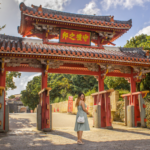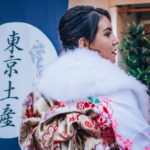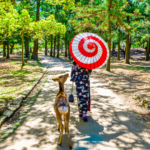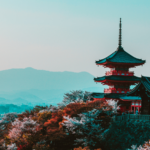Dreaming about visiting the Land of the Rising Sun in summer? This is your ultimate guide to experiencing the magic of summer in Japan. So why should you listen to me above all other bloggers? Simple. I lived in Japan for three years, speak the language, and was completely immersed in Japanese society.
Imagine strolling through streets adorned with colorful lanterns during Gion Matsuri, savoring the cool taste of shaved ice on a hot day, or watching fireworks at the Sumidagawa Festival.
Summer in Japan is a sensory delight, blending cultural richness, natural beauty, and modern excitement. Whether you’re a seasoned traveler or planning your first solo adventure, this guide is crafted just for you.
We’ll dive into the best times to visit, how to beat the summer heat, must-see festivals, and outdoor activities. So pack your bags, grab your UV umbrellas, and let’s embark on an unforgettable summer journey through Japan together!

Blog Posts You Might Like
- A Complete Guide To Solo Female Travel in Japan
- How Not To Be A Complete Dickhead in Japan
- How To Prepare For Typhoons in Japan

Best Time to Visit Japan in Summer
June in Japan
Japan’s summer months stretch from early June to early September. Early summer, particularly early June to late June, marks the beginning of Japan’s rainy season.
While the thought of rain might dampen your spirits, it’s a great time to visit because temperatures are milder and there are fewer tourists. Plus, it’s a good season to explore Japan’s major cities like Tokyo and Osaka.
July & August in Japan
As we move into July and August, the weather conditions shift to hot and humid, with temperatures soaring around 30°C-35°C (86°F-95°F). Despite high temperatures, late July and early August are the busiest times due to national holidays and the peak of summer festivals.
Late August and September in Japan
For those who prefer cooler temperatures and less crowded destinations, consider planning your trip towards the end of summer, from late August to early September. However, be mindful of the typhoon season which can bring strong winds and heavy rains. Always check the Japan Meteorological Agency for updates on weather conditions.
Dealing with Japan’s Rainy and Typhoon Seasons
When planning a summer trip to Japan, the best thing is to be prepared for the rainy and typhoon seasons. For a complete guide on How To Prepare For Typhoons in Japan, click here.
Japan’s rainy season, known as “tsuyu,” typically occurs from early June to late July. Pack a reliable rain jacket and waterproof shoes. Visiting during the rainy season has its perks – the rain enhances the beauty of gardens like Kenrokuen in Kanazawa and makes temple visits in Kyoto even more serene.
Typhoon season runs from August to October, with the peak often in September. Typhoons can bring strong wind, heavy rainfall, and sometimes travel disruptions.
The good news is that modern forecasting methods by the Japan Meteorological Agency provide timely updates, allowing you to stay informed and plan accordingly. Having travel insurance can also provide peace of mind in case of unexpected delays or cancellations. I recommend using World Nomads Travel Insurance.
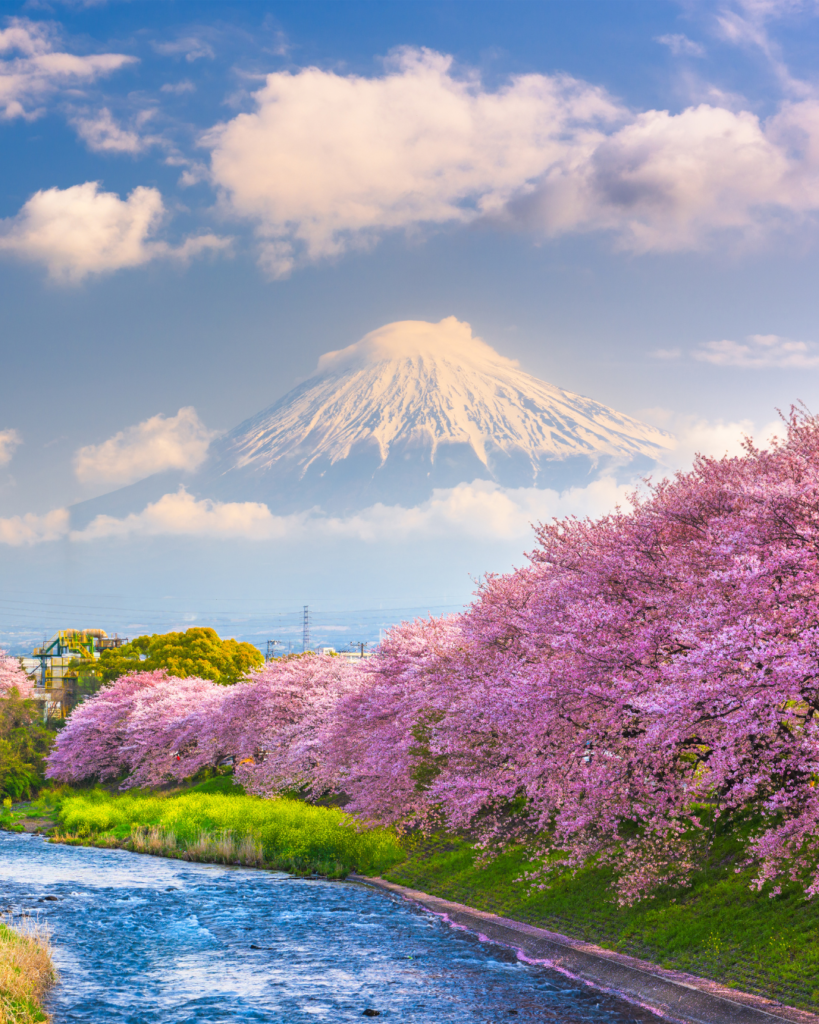
National Holidays in Japan 2024
Most major companies and workplaces give Japanese workers off days during public holidays. Plan your trip accordingly because there will usually be an influx of people at major tourist destinations and other local establishments.
- July 15, 2024 Marine Day
- August 12, 2024 Mountain Day
How To Beat The Summer Heat in Japan
These are my true and tested travel tips for dealing with humid summers in Japan. This list of things gives you great options and tips on how to survive the hottest months.
1. Handheld Fan, Sweat Towel, Extra Clothes
Trust me when I tell you…bring an extra change of clothes. I have soaked through my tank tops and underwear. Japanese people are used to this time of year so they don’t seem to sweat. A small hand held fan and sweat towels from Daiso will help during your summer trip.
2. Cooling Wipes
Cooling Wipes are the best option to get cool quickly on hot days. Wipe them on your body and feel the icy effect take place. Do not use the body wipes on your face because they sting. Usually, there are separate wipes for that.
Gatsby is a popular brand and I often find these at convenience stores aka konbini. There are also different wipes for men and women. Women’s wipes are super cute, but the men’s wipes pack more punch.
3. Get Light and Breezy Clothes
One of the best brands to keep you cool is the Uniqlo Airism series. These are designed to evaporate sweat from your body faster. The dry-tech clothes also do the same and it’s a good idea to have tank tops and shirts with this technology.
For the ladies: Modesty is different in Japan. Showing your armpits, shoulders, or cleavage is frowned upon. Personally, I don’t care and I will dress how I need to so I don’t melt into a puddle. Just putting this out there so you can make your own decision.
4. You’re Going To Sweat Profusely… So get used to it!
One of the strangest things I’ve heard in Japan after sweating through my clothes was, “You have good circulation! You must be so healthy.”
If you’re a thick thighed lady, I recommend wearing your favorite lightweight spandex shorts under your skirts or dresses.
Another tip I have is to get eyelash extensions while in Japan. They do an incredible job and it saves you time on your makeup. I guarantee even the most waterproof mascara will melt off your face.
5. Use Sunblock
If you’re particular about a brand of sunblock you like to use, then bring your own from home. I’m absolutely obsessed with AHC’s sunscreen stick. It’s so lightweight and feels like I have nothing on my face.
6. Drink Plenty of Water
Drink at least 2 liters or more a day of water to avoid heat stroke. I thought I was tough shit and almost passed out at Summer Sonic 2013. Don’t be a dumbass like me.
I also recommend bringing Liquid IV with you to help you replenish your electrolytes. It also helps you feel less tired and groggy after a long day of exploring.
If you choose a Japanese option, Aquarius is a a low-calorie sports drink similar to other electrolyte drinks. P.S. Drink Pocari Swass aka Pocari Sweat if you hate yourself.
7. Eat Cold Japanese Summer Food
Cold soups, salads, soba, and veggies are your best friend. I recommend eating melon, cucumber, and mint. Japanese cuisine I recommend eating are cold noodles and ice cream.
Try shaved ice, or “kakigori.” This popular summer treat comes in a variety of flavors, from traditional green tea to red bean, and exotic fruit syrups. It’s a delicious way to cool down, and you’ll find kakigori stands everywhere, from street vendors to high-end cafes.
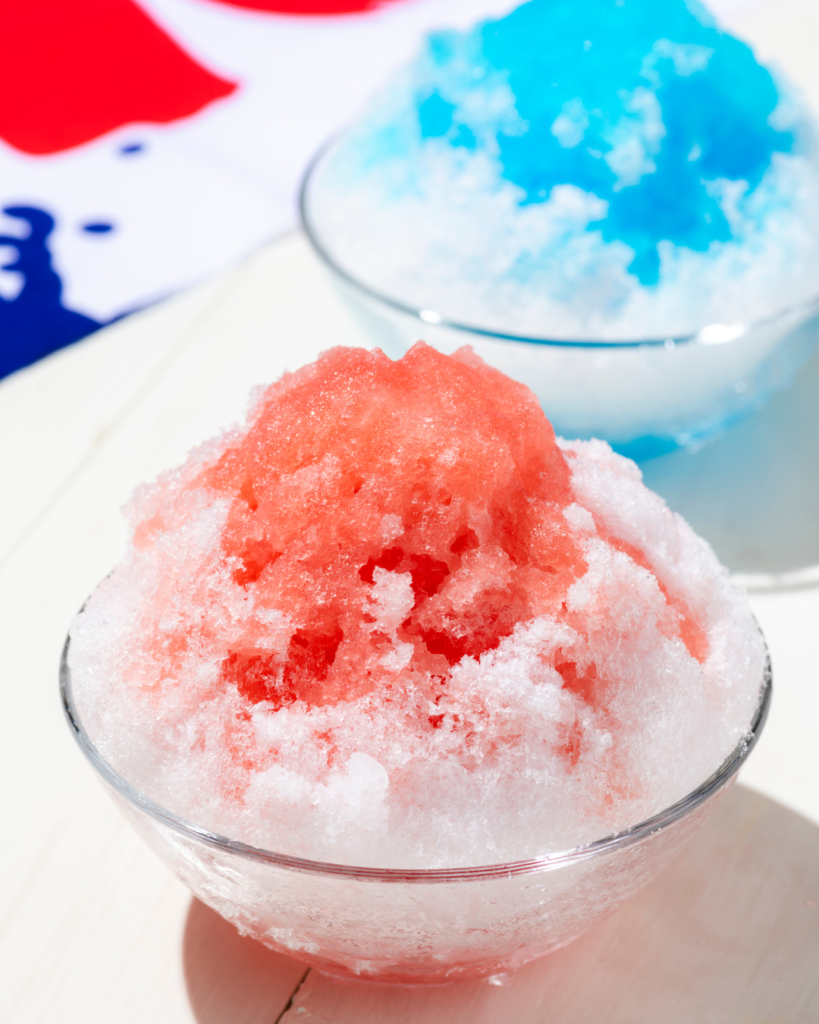
Travel Tips for a Summer Trip to Japan
Planning a summer trip to Japan? As your internet big sister looking out for you, I’ve got some essential travel tips to ensure your journey is smooth, enjoyable, and filled with unforgettable memories.
1. Use Japan’s Efficient Public Transportation
Japan’s public transportation is world-class and can take you almost anywhere. Purchase a Japan Rail Pass if you plan to travel extensively by train. For city travel, consider getting an IC card like Suica or Pasmo for easy access to trains and buses.
2. Plan Ahead For Popular Destinations
Summer is the busiest time Japan, so popular destinations like Kyoto, Tokyo, and Osaka can get crowded. Book your accommodations and any must-see attractions well in advance using Klook. Consider visiting major sites early in the morning to avoid the peak crowds and midday heat.
3. Embrace the Early Morning and Late Evening Hours
To beat the summer heat, plan outdoor activities for early mornings or late evenings. This is also a great time to experience Japan’s natural beauty, like watching the sunrise over Mount Fuji or enjoying a quiet evening stroll through a temple garden.
4. Be Prepared for Rainy and Typhoon Seasons
As mentioned earlier, summer in Japan includes the rainy season and typhoon season. Indoor activities, such as visiting museums, aquariums, or shopping in department stores, can be excellent alternatives on rainy days.
5. Enjoy Japan’s Festivals and Events
Summer in Japan is festival season, so take advantage of the vibrant cultural experiences. Wear a yukata, try street food, and enjoy the festive atmosphere. From fireworks displays to traditional dance festivals, these events offer a unique insight into Japanese culture.
6. Respect Local Customs and Etiquette
Always remove your shoes when entering someone’s home or certain accommodations, be quiet on public transportation, and follow the rules when visiting temples and shrines. I also have a blog post on How Not To Be a Complete Dickhead in Japan.
7. Stay Connected
Consider renting a portable Wi-Fi device or getting a local SIM card to stay connected. This is useful for navigation, translation apps, and staying in touch with family and friends.
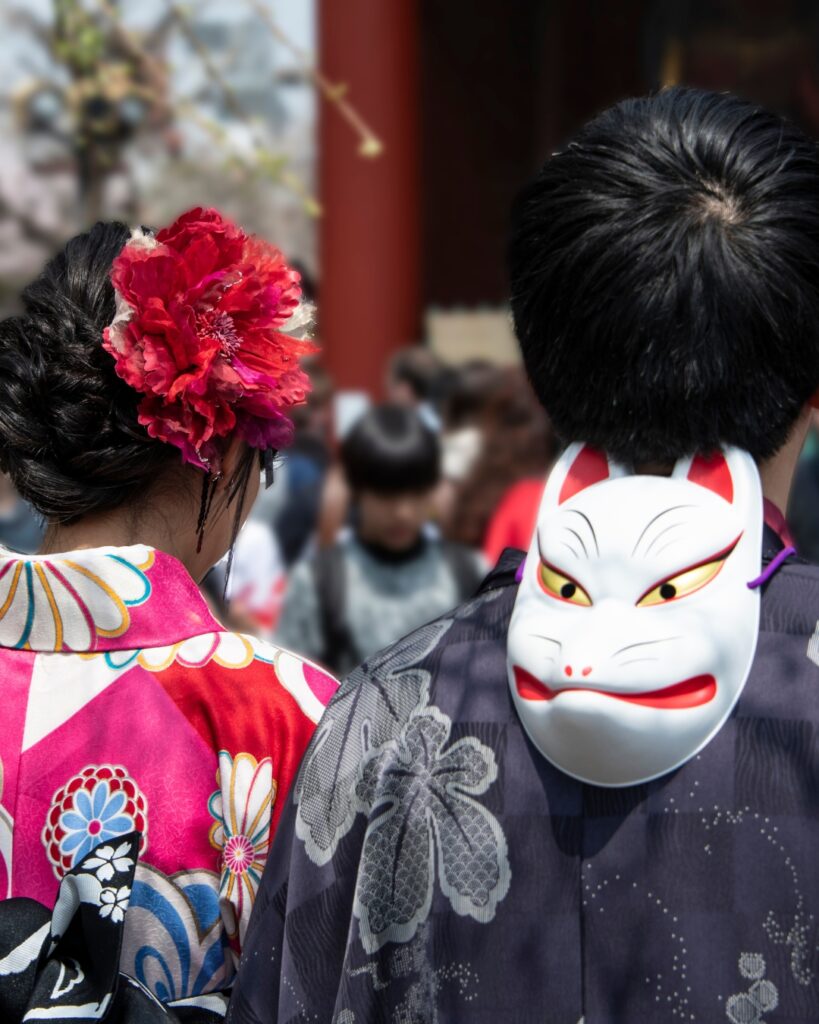
Summer Festivals and Cultural Experiences in Japan
Gion Matsuri
One of the most famous festivals is the Gion Matsuri in Kyoto, held throughout July. This centuries-old celebration features stunning parades with massive floats, traditional music, and dancers in beautiful yukatas.
It’s a great way to immerse yourself in Japanese culture and history, as the festival dates back to the Edo period. The entire city comes alive with food stalls, games, and festive decorations.
Tanabata Festival
Also known as the Star Festival, it is celebrated in early July. Based on a romantic legend, this festival involves writing wishes on colorful strips of paper and hanging them on bamboo branches. The Tanabata Festival is especially enchanting in Sendai, where the streets are adorned with massive, elaborate decorations.
Sumidagawa Fireworks Festival
For a dazzling display of fireworks, the Sumidagawa Fireworks Festival in Tokyo is unbeatable. Held on the last Saturday of July, this event lights up the sky over the Sumida River with spectacular pyrotechnics. It draws huge crowds, so arrive early to secure a good spot.
Nebuta Matsuri
In the Tohoku region, the Nebuta Matsuri in Aomori features gigantic illuminated floats depicting warriors, mythical creatures, and kabuki actors. These floats are accompanied by traditional music and dance.
Awa Odori
This festival is held during the last dregs of the summer season in mid-August in Tokushima Prefecture. It is a dance festival, characterized by lively traditional music and dancers in colorful costumes.
Everyone is welcome to join in and learn the simple yet captivating Awa dance. I also recommend the trek to Iya Valley, with its vine bridges and secluded hot springs.
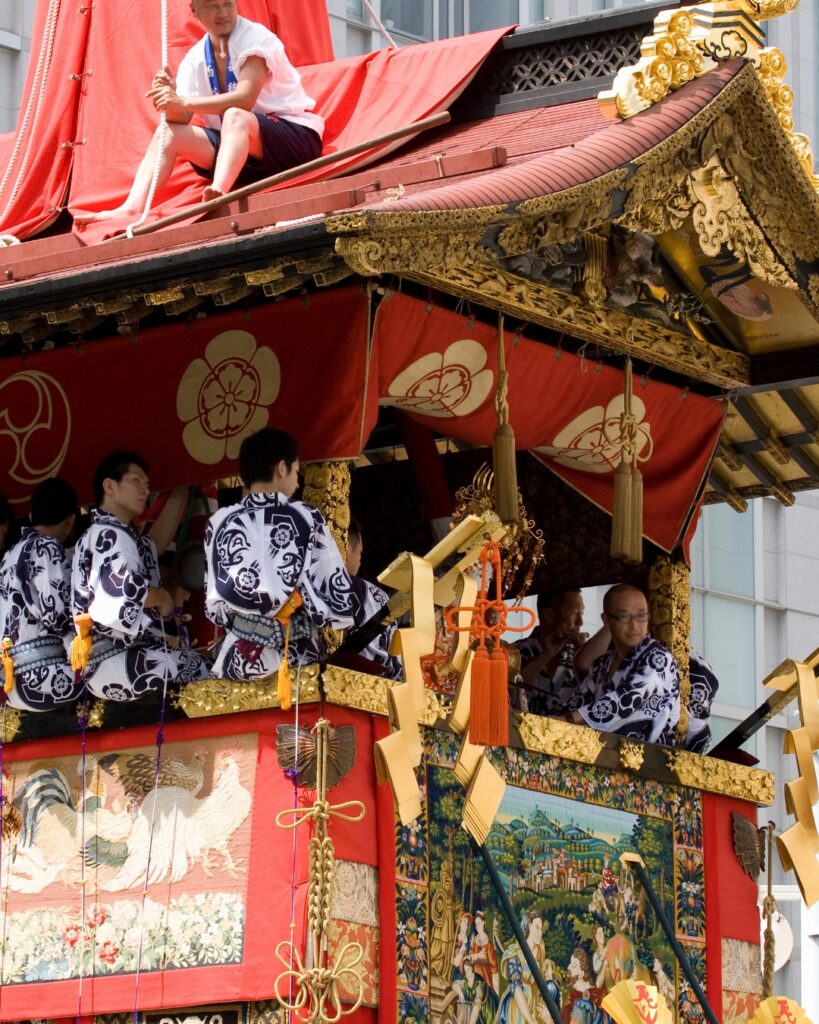
Exploring Natural Beauty and Outdoor Activities
Climb Mount Fuji
Mount Fuji is located in Yamanashi prefecture and is home to amazing vineyards. In this region, you’ll also see Lake Kawaguchi which is one of the Fuji Five Lakes. I recommend going on a scenic picnic here. There are also hot springs, where you can unwind and soak in the natural beauty. I recommend going to an onsen after you climb Fuji.
Climbing Mt. Fuji was one of the most difficult and rewarding experiences of my life. The official climbing season runs from early July to early September when the weather is most stable.
Reaching the summit of this UNESCO World Heritage Site will give you goosebumps as you listen to the national anthem of Japan and take in breathtaking sunrise views. I recommend climbing Mount Fuji with this tour group here.
Alternatively, if you don’t want to climb Fuji, I recommend these tours:
- One Day Mount Fuji Tour To Sengen Park, Honmachi Street, and Neba
- One Day Mount Fuji and Hakone Day Trip
- One Day Mount Fuji Day Trip To The Most Popular Spots
Japanese Alps
For those who prefer cooler destinations, the Japanese Alps are the perfect. It’s the best way to escape hot Japanese summers. Located in Nagano Prefecture, this region offers numerous hiking trails, picturesque mountain villages, lush greenery, and opportunities for activities like paragliding and mountain biking.
While there make sure you visit the charming town of Takayama. Here, you can enjoy traditional wooden houses, local crafts, and the scenic beauty of the surrounding mountains.
- Two Day One Night Tateyama Tour From Nagoya
- Two Day One Night Tateyama Tour From Shinjuku
- One Day Tour of Tateyama From Tateyama
Shiretoko National Park
Another great spot for nature lovers is Shiretoko National Park in Hokkaido. Known for its great outdoors you’ll see untouched wilderness and diverse wildlife. This park is ideal for hiking, wildlife watching, and taking a scenic boat cruise along the coast. The cooler temperatures of Hokkaido make it a popular destination during Japan’s hot summer months.
Izu Peninsula
Don’t forget the coastal areas! The Izu Peninsula offers beautiful beaches, snorkeling, and diving spots, making it a perfect summer getaway. The clear waters and vibrant marine life provide a fantastic backdrop for underwater adventures.

Hidden Gems and Off-the-Beaten-Path Destinations
Niigata Prefecture
Known for its rice paddies and sake production, Niigata also boasts stunning coastal scenery and mountainous landscapes. Visit the historic Sado Island, where you can explore the abandoned gold mines, enjoy traditional noh theater, and experience local crafts like pottery and taiko drumming.
- Niigata Sake Fair (September 14, 2024 – September 16, 2024)
- Kanazawa Full Day Tour
- From Kanazawa: Shirakawa-go, Gokayama and Wood Carving Village
Nagano Prefecture
Nagano Prefecture is another hidden gem that promises cooler temperatures and picturesque landscapes. Explore charming mountain towns like Matsumoto, home to one of Japan’s most beautiful castles. In summer, the Kamikochi Valley is a haven for hikers, with its pristine rivers, alpine meadows, and breathtaking views of the surrounding peaks.
- Kamikochi & Matsumoto Castle One Day Tour from Nagano
- SKY BLUE Paragliding Experience in Nagano from Hakuba
Okayama Prefecture
The town of Kurashiki features well-preserved Edo-period architecture, narrow canals, and artisanal shops. The Bikan Historical Quarter is a delight to stroll through, offering a peaceful atmosphere far removed from the hustle and bustle of Japan’s major cities.
Okinawa Prefecture
Finally, explore the Okinawa Islands for a slice of tropical paradise. While the main island is more popular, remote islands like Miyakojima and Ishigaki offer crystal-clear waters, pristine beaches, and vibrant coral reefs perfect for snorkeling and diving.
These islands also provide a rich blend of Ryukyu culture, different from mainland Japan. I lived here for three years and I 10/10 recommend visiting.
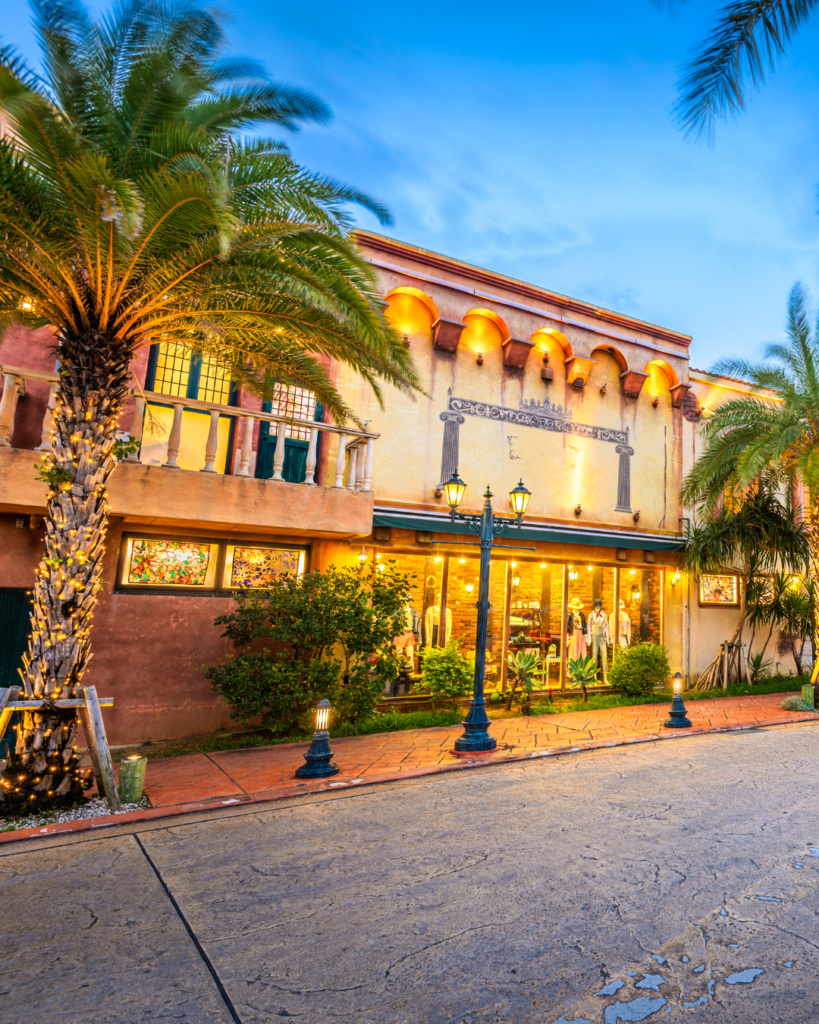
Unique Summer Experiences
Summer in Japan isn’t just about the usual sightseeing and festival hopping; it’s also a season brimming with unique experiences that can make your trip truly unforgettable.
Traditional Baseball Game
Baseball is known as “yakyu” in Japanese and is super popular. Catching a game at a stadium like Tokyo Dome or Koshien Stadium in Osaka is a vibrant experience filled with enthusiastic fans, coordinated cheers, and a festive atmosphere. Don’t forget to try the stadium food – everything from yakitori to cold beer.
Japanese Beer Gardens
Next, immerse yourself in the local nightlife by visiting beer gardens. These open-air venues pop up on rooftops and parks across major cities like Tokyo, Osaka, and Kyoto.
Sipping on cold beer while enjoying a view of the city skyline is a quintessential summer experience. Some beer gardens also offer all-you-can-eat barbecue and other delightful summer foods, making it a great option for a relaxed evening.
Explore Japan’s Street Food
Summer festivals and night markets are perfect places to try takoyaki (octopus balls) and yakisoba (fried noodles). One of my favorite parts about summer festivals in Japan was wearing my yukata and people-watching on a lawn or bleachers.
Firefly Viewing
Known as “hotaru,” fireflies are a symbol of summer in Japan. Special events and tours are organized in places like the countryside of Nagano and Okayama Prefecture. These are the best places to watch these magical creatures light up the night.

As we wrap up this ultimate guide to experiencing summer in Japan, I hope you’re feeling excited about your Japan trip. Remember, summer in Japan is not just about enduring the heat; it’s about embracing the warm weather with open arms and a curious spirit. Stay hydrated and get ready for a summer trip during the best season!


This post contains affiliate links which means at no additional cost to you, I make a small commission to help keep Gina Bear’s Blog running. Thanks for your support!

Japan Travel Guide E-Book
Planning on traveling to Japan?
Enter your name and email address and click the button below to receive your Easy Japan Travel Guide so you can travel like a local!

